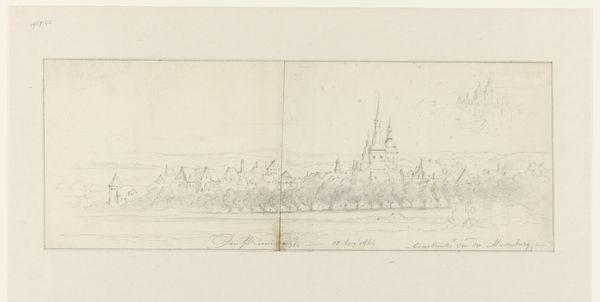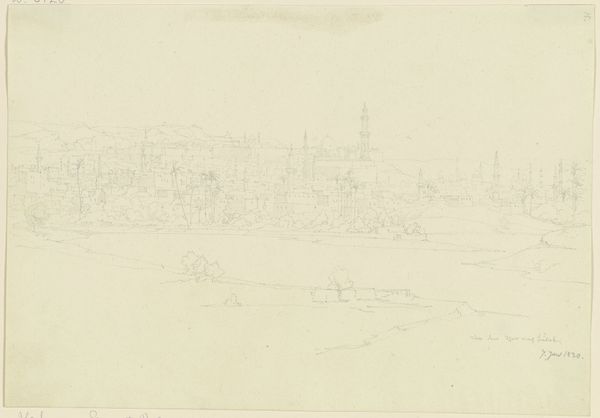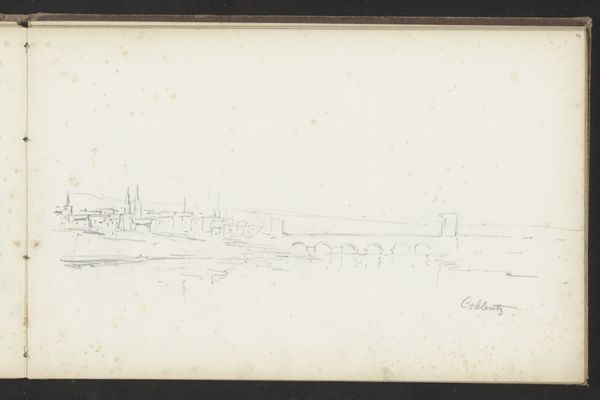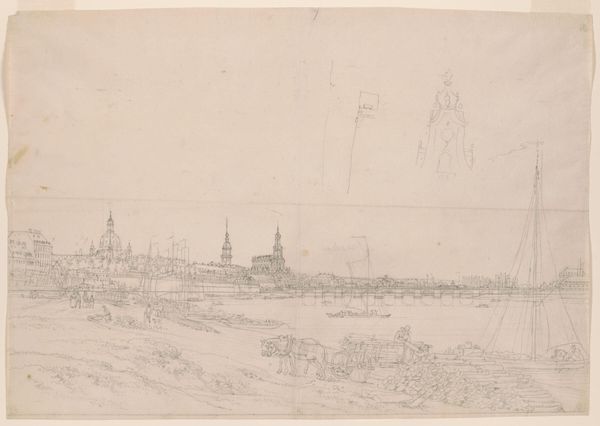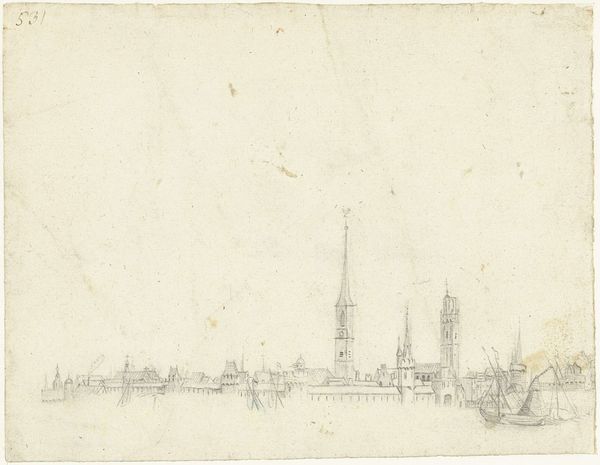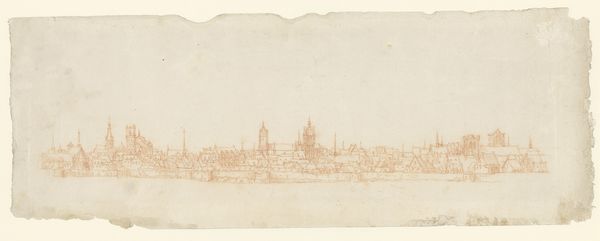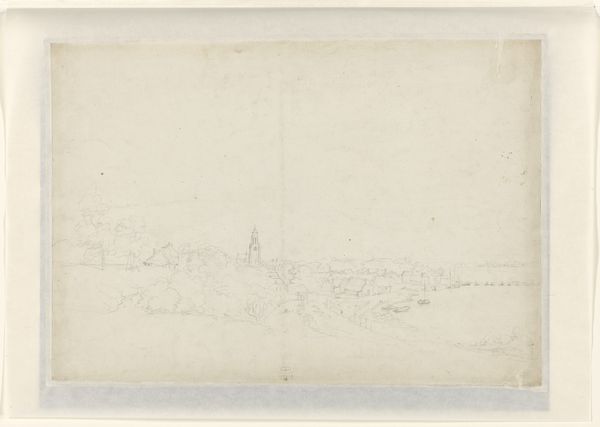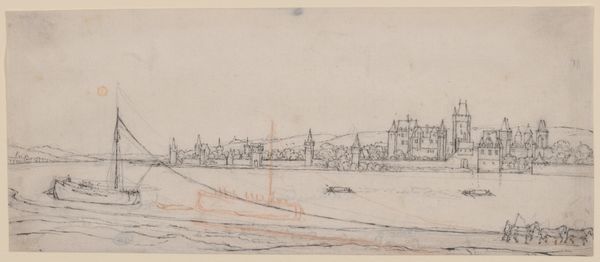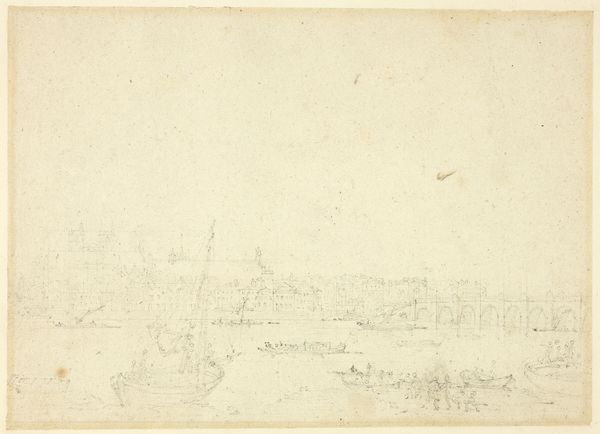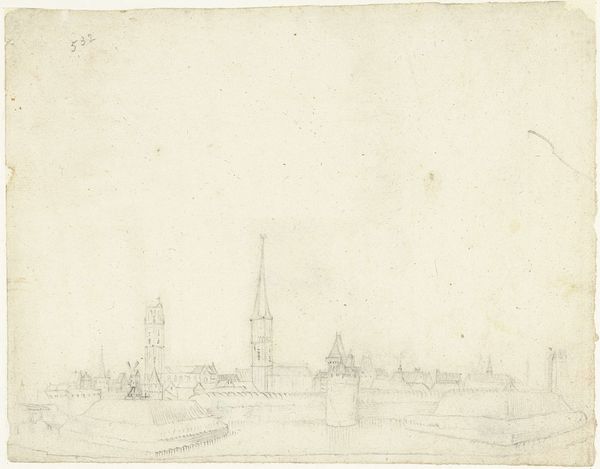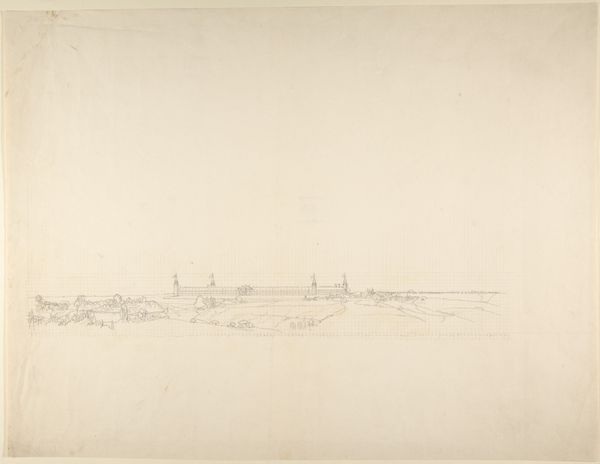
Study for View of London from the Thames c. 1809
0:00
0:00
drawing, print, paper, pencil, graphite
#
drawing
#
neoclacissism
# print
#
pen sketch
#
landscape
#
etching
#
paper
#
pencil
#
graphite
#
cityscape
Dimensions: 187 × 261 mm
Copyright: Public Domain
Curator: Looking at this etching from around 1809 by Augustus Charles Pugin titled "Study for View of London from the Thames", one is immediately struck by the pre-industrial portrayal of the cityscape. How does this preliminary sketch strike you? Editor: Ghostly! It’s almost faded, like a memory struggling to surface. All those architectural details, barely there, rendered in these wispy pencil and graphite lines. The composition itself feels tentative, a bit dreamy even, as though London is emerging from a mist. Curator: It's crucial to contextualize this work within the era's prevailing sociopolitical dynamics. As a study, this print hints at the emerging neoclassicism in British architectural aesthetics, reflective of the imperial ambitions of the British Empire, translated to the very foundations of city infrastructure and design, with this kind of city-scape becoming an idealized and heavily gendered perspective. Editor: I dig that! But also, can we just vibe for a second on how the sparseness evokes the feeling of open space, before the relentless density of urban sprawl fully consumed the skyline. I also sense that this image can reflect our feelings about changes, something of nostalgia to simpler times. The artist wants you to dive into its possibilities rather than being pinned down by details. Curator: Certainly, and it reflects ongoing debates of industrialization that heavily impacted communities and environments in London. The choice to focus on architectural form and urban layout rather than human presence also mirrors broader issues around labor and social stratification inherent to city planning at the time. The artist intentionally gives focus to the dominant powers' landmarks. Editor: Maybe so, but the boats remind us of a more intimate London—rowers plying the Thames, close to the water, close to each other. You can see them making their daily trips along the river, giving them an intimate view to be closer to the world of the upper-class who controlled the City skyline that we see far from them. Curator: That interplay gives another vantage point when looking at London through Pugin's work. Ultimately, Pugin delivers his rendition of what it means for the dominant power to display authority through buildings and cityscapes while not giving much thought for the social fabric. Editor: Exactly! It's fascinating to see how a city view evokes historical nuances to our understanding of community then and today.
Comments
No comments
Be the first to comment and join the conversation on the ultimate creative platform.
